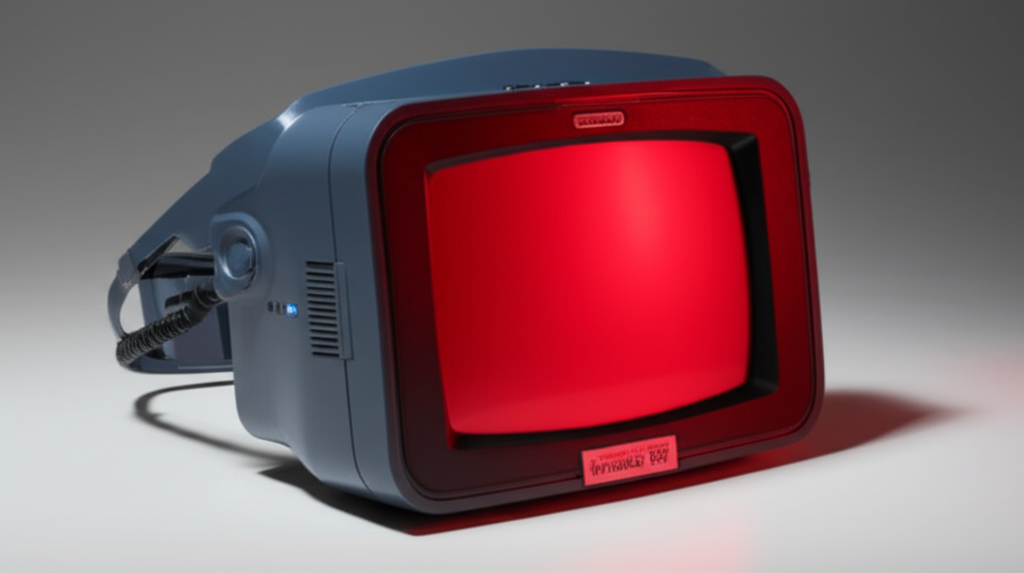Technology’s journey isn’t always a smooth, upward trajectory of progress. Alongside the groundbreaking inventions that change the world, there’s a fascinating graveyard of ideas that never quite landed. We often celebrate the innovations that succeeded, from the internet to smartphones, but it’s just as illuminating—and sometimes hilarious—to look at the gadgets that flickered out. This post explores some of history’s strange, forgotten, or commercially unsuccessful tech creations that remind us innovation is full of twists and turns.
The Wild West of Early Tech
Before powerful mini-computers lived in our pockets, the world of personal technology was a landscape of clunky, ambitious experiments. Engineers dreamt of portability, leading to devices that were revolutionary in concept but often cumbersome in reality. This era before ubiquitous mobile computing was truly a wild west of design and function.
Before Smartphones: Bizarre Portables
Early attempts at portable computing were a far cry from today’s sleek devices. Think of bulky PDAs like the Apple Newton or Palm Pilot alternatives that struggled with handwriting recognition or connectivity. Weird wearable prototypes also emerged, like clunky keyboard gloves or head-mounted displays from the 1980s and 90s, often seen in research labs but rarely in public. These devices were glimpses into a mobile future, limited by battery life, screen technology, and processing power, yet they showed an early desire for computing on the go.
Home Innovations That Flopped Hard
The home was also a battleground for bizarre tech. Beyond the famous videocassette format war between Betamax and VHS—where the technically superior Betamax lost to VHS’s longer recording time and lower cost—other niche formats like LaserDisc or CED (Capacitance Electronic Disc) also vied for living room dominance before DVDs took over. Kitchen gadgets with unnecessary digital interfaces or complex, expensive early home automation systems (long before user-friendly smart homes) aimed to simplify life but often added complication or cost, failing to gain widespread adoption.

The Curious Case of Wearable Tech Fails
Technology designed to be worn often highlights design flaws or social awkwardness more prominently than static devices. While today we have sleek smartwatches and fitness trackers, the path here is littered with highly visible failures. The reasons for these flops were varied, often a combination of poor usability, high price, short battery life, or simply looking too strange to wear in public.
Failed attempts at smart glasses predate modern efforts. Devices like the GlassUp or Meta Smart Glasses (not the Facebook kind, but an early competitor) aimed to overlay information but struggled with design, bulk, or functionality compared to what consumers wanted. Early smartwatches before the Apple Watch or popular Android Wear devices were often thick, slow, and lacked compelling apps or battery life. Strange health monitors or sensor-laden clothing also appeared, intriguing concepts that failed due to discomfort, inaccuracy, or lack of a clear user benefit beyond basic tracking.
Connectivity Catastrophes and Internet Oddities
Connecting devices to the internet seems commonplace now, but early attempts were often clunky or limited. Before the modern IoT landscape, the idea of internet-connected appliances felt futuristic, sometimes leading to bizarre or short-lived gadgets. These devices illustrate how our understanding of network potential evolved.
Clunky early networking hardware or attempts to embed internet capabilities into everyday objects, like refrigerators that could order groceries (in theory), were often ahead of their time or too expensive and complex to use reliably. Failed social networking gadgets, designed for specific platforms, also appeared before smartphone apps made them obsolete, highlighting the rapid changes in how we connect online.
Gaming and Entertainment’s Strange Offspring
The entertainment industry, constantly seeking novelty, has produced a rich history of experimental gadgets that didn’t survive the market. Failed game consoles and peripherals are particularly well-documented examples of ambitious ideas falling flat, often due to high cost, lack of software support, or poor execution.
Notable console failures include the Nintendo Virtual Boy, an early and uncomfortable attempt at portable 3D gaming, and powerful but undersupported systems like the Atari Jaguar or add-ons like the Sega CD and Sega 32X. Peripheral failures range from the overhyped Nintendo Power Glove—cool in concept but frustrating in use—to niche motion controllers or awkward VR attempts from the 1990s preceding today’s more refined systems. Even the very first home console, the Magnavox Odyssey, had limited success compared to later systems.

Why Did These Gadgets Fail? (Lessons Learned)
Looking back at these technological oddities, common themes emerge regarding why they didn’t succeed. Understanding these factors is crucial for understanding innovation itself. Failure isn’t just an end; it’s often a vital learning opportunity.
Here are some common reasons these gadgets faded away:
- Too Expensive: The technology or manufacturing costs made them unaffordable for the average consumer.
- Poor User Experience: Clunky interfaces, difficult setup, or unreliable performance.
- Ahead of Its Time: The necessary infrastructure (like reliable internet) or complementary technologies weren’t ready.
- Lack of Clear Problem Solved: They were cool ideas without a practical, compelling use case for most people.
- Poor Marketing or Positioning: Consumers didn’t understand what the gadget was or why they needed it.
- Technological Limitations: Issues like short battery life, slow processing, or low-quality displays hindered function.
- Competition: Better, simpler, or cheaper alternatives existed or emerged quickly.
- Social Awkwardness: Some wearable tech was simply too strange or uncomfortable to use publicly.
| Gadget Example | Primary Failure Reason(s) |
|---|---|
| Nintendo Virtual Boy | Discomfort, limited library, monochrome screen |
| Apple Newton | High cost, large size, poor handwriting recognition |
| Betamax | Shorter recording time vs. VHS |
| 3Com Audrey | Limited function (internet appliance) |
| Nintendo Power Glove | Poor accuracy and control |
These failures aren’t just punchlines; they are stepping stones. The lessons learned about design, usability, market fit, and technological readiness from these missteps directly inform the successful gadgets we use today. Each flop contributes to the collective knowledge base that drives future innovation, making the tech that does succeed better and more aligned with user needs.
Conclusion
Our journey through the museum of odd and failed technology reminds us that innovation is rarely a straight path. It’s a process of trial and error, brilliant ideas meeting unfortunate realities, and ambitious designs hitting technological or market limitations. The gadgets that time forgot are more than just historical footnotes; they are important teachers.
They show us that failure is an intrinsic part of progress, essential for refining concepts and understanding what truly resonates with users. As we marvel at today’s ubiquitous smartphones, smart homes, and advanced wearables, it’s worth remembering the strange, clunky, and sometimes comical ancestors that paved the way. It also makes you wonder: which pieces of tech we consider normal today will future generations look back on as incredibly odd or completely obsolete?
FAQ
Q: What is considered the most famous failed tech gadget?
A: While subjective, the Nintendo Virtual Boy is often cited due to its significant hype followed by rapid market withdrawal and user discomfort issues. Google Glass (Explorer Edition) also became a widely recognized example of a wearable tech failure, though its concept has seen resurgence in enterprise settings.
Q: Are any features or ideas from these failed gadgets used in modern tech?
A: Absolutely. Many failed gadgets were simply ahead of their time or had poor execution, but their core ideas were sound. Concepts from early PDAs live on in smartphones, ideas from failed smart glasses are being refined for AR/VR headsets, and early home automation attempts paved the way for modern smart home systems. Failure often refines a concept for later success.
Q: Why are companies willing to release products that might fail?
A: Innovation inherently involves risk. Companies invest in new ideas hoping to capture a new market or revolutionize an existing one. Sometimes, market conditions aren’t right, the technology isn’t mature enough, or user needs aren’t fully understood until the product is released. The potential reward of a successful new product outweighs the risk of failure for many tech companies.
Q: How quickly do tech gadgets usually fail if they aren’t successful?
A: The timeline varies, but market reception is often clear within the first year or two. If a gadget doesn’t gain traction, sales numbers are low, and reviews are poor, companies typically stop production and support relatively quickly, sometimes within months or a year, especially if it’s a hardware product requiring manufacturing investment.

